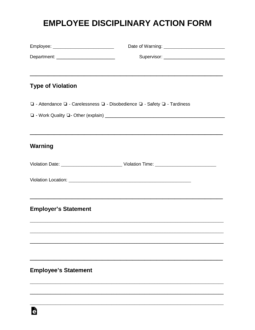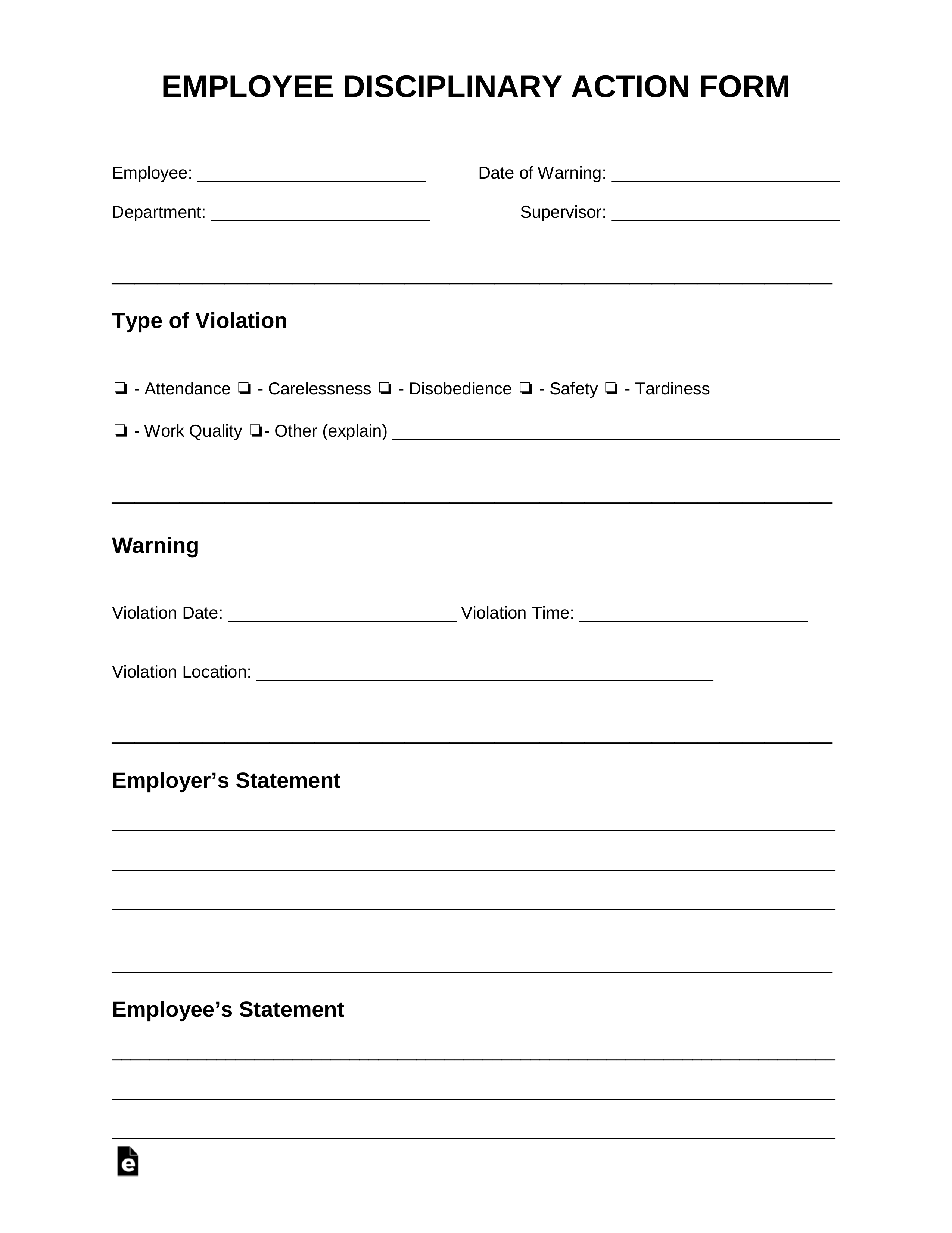Updated August 21, 2023
An employee disciplinary action form is designed to inform an Employee who is unable to follow the policies or expectations set by their Employer the result of their action(s). The punitive action defined in this form will usually be unwelcome by most employees, so it would be considered wise to document it, then present it in writing. A standardized document will make sure to keep this action on a professional level while, at the same time, providing a hard copy record which each party should keep for future reference.
When to Use an Employee Disciplinary Action Form
An Employee Disciplinary Action Form should be utilized when there is professional behavior or performance concerns regarding an individual that require immediate improvement. Disciplinary action could be taken for inappropriate conduct, safety violation, performance or quality issues, absenteeism, late arrivals, policy/procedure violation, etc.
Elements of an Employee Disciplinary Action
The An Employee Disciplinary Action Form should be inclusive of all pertinent details that are encompassing of the issue and the employee. Common information to include is:
- The employees first and last name.
- The date of disciplinary action.
- A detailed description of the issue (include dates, times, location and witnesses of the issue, if applicable).
- Any prior history in relation to disciplinary action at hand.
- Any employee comments in regards to the disciplinary action.
- Corrective action being requested of the employee and expected date of appropriate behavior or improvement.
- Additional pertinent comments of the Manager or individual providing Disciplinary action, as a result of the meeting.
- The name of the employees reporting Manager.
- Signature of the employee acknowledging corrective action form and agreement of requested improved behavior.
- Signature of the employees Manager or individual providing Disciplinary action.
How to Discipline an Employee (3 steps)
- Give Verbal Warning of Violation
- After Second Violation Give Written Notice
- Third Strike Constitutes an Employee Review
2. After Second Violation Give Written Notice
3. Third Strike Constitutes an Employee Review


